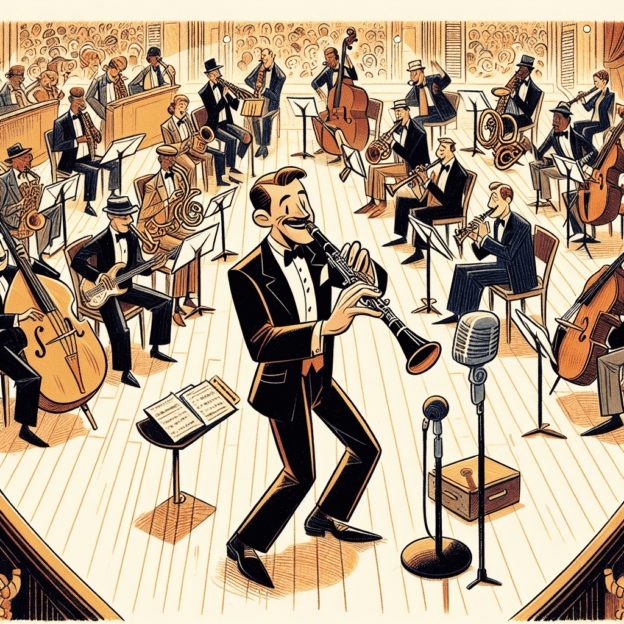The Woody Herman Orchestra stands as one of the enduring symbols of big band jazz and innovation. Founded by the legendary clarinetist and bandleader Woody Herman in the late 1930s, this orchestra played a key role in shaping the sound of jazz during its peak while also inspiring future generations of musicians. This article explores the rich history, unique sound, and lasting impact of the Woody Herman Orchestra, offering valuable insights for musicians, especially clarinetists looking for inspiration and knowledge.
The Early Days of Woody Herman
Woody Herman was born on May 16, 1913, in Milwaukee, Wisconsin. He showed a natural talent for music from an early age and started his musical journey playing clarinet in various bands. By his twenties, Herman had made a name for himself as a bandleader with a fresh, innovative sound. In the late 1930s, he formed the Herman Herd, which would later grow into the orchestras that carried his name and vision.
The Sound of the Woody Herman Orchestra
The Woody Herman Orchestra stood out due to its unique mix of strong melodies, rich harmonies, and its ability to blend different jazz styles. Known for its swing and detailed arrangements, the band featured talented musicians and soloists, including some exceptional clarinetists. The orchestra was known for its lively arrangements that paid close attention to dynamics and rhythms, captivating audiences wherever they performed.
| Era | Musical Style | Key Innovations |
|---|---|---|
| 1930s-1940s | Swing | Incorporation of blues elements |
| 1940s-1950s | Bebop influence | Progressive jazz arrangements |
| 1950s-1960s | Cool jazz | Experimentation with harmonies |
| 1960s-1980s | Fusion | Incorporation of rock and electronic elements |
Key Musical Features
- Clarinet Solos: The clarinet was a cornerstone of the orchestra. Herman often performed solos, showcasing his skill and innovative techniques. His selection of clarinetists, from the legendary Messengers of Swing to younger, dynamic players, ensured that the clarinet was front and center in many arrangements.
- Complex Arrangements: The Herman Orchestra was renowned for its intricate arrangements that blended various jazz styles, including bebop and swing.
- Innovative Use of Voices: Woody didn't limit himself to instruments; he often incorporated vocalists in unique ways, blurring the lines between instrumental and vocal jazz.
Notable Contributions and Achievements
The Woody Herman Orchestra left an indelible mark on the music world, producing numerous recordings and collaborations:
- “Four Brothers”: One of their most iconic pieces, featuring four tenor saxophonists in a tight, harmonized arrangement that became a jazz classic.
- “Woodchopper's Ball”: A signature composition and one of the most recognizable themes in the big band repertoire, showcasing the band's rhythmic prowess and engaging melody.
- Integration of New Styles: The orchestra was known for embracing new jazz styles, continuously adapting and evolving with the music scene.
The Impact on Musicians and the Clarinet Community
The Woody Herman Orchestra had a profound influence on clarinetists and jazz musicians. Many players, inspired by Herman's technique and improvisational style, credit him with shaping their approach to playing:
- Inspiration for Clarinetists: Many clarinetists look up to Herman as a role model, adopting his energetic style and innovative techniques.
- Building a Legacy: Herman's contributions have inspired countless music educators and students, nurturing future generations of clarinet players.
- Influence on Contemporary Artists: Many modern musicians continue to draw on Herman's works, incorporating his influences into current musical forms.
Continuing the Tradition
After Woody Herman's passing in 1987, several acclaimed musicians stepped up to carry on the traditions of the Woody Herman Orchestra. Although the band has undergone various changes, its foundation remains rooted in high standards of musicianship and creative expression. Ensembles inspired by Herman continue to celebrate his music, ensuring that it will live on for years to come.
As jazz continues to evolve, the influence of the Woody Herman Orchestra remains strong, keeping the spirit of improvisation and collective sound alive. For aspiring clarinetists and all musicians, studying Herman's work provides valuable insights into jazz and clarinet playing.







